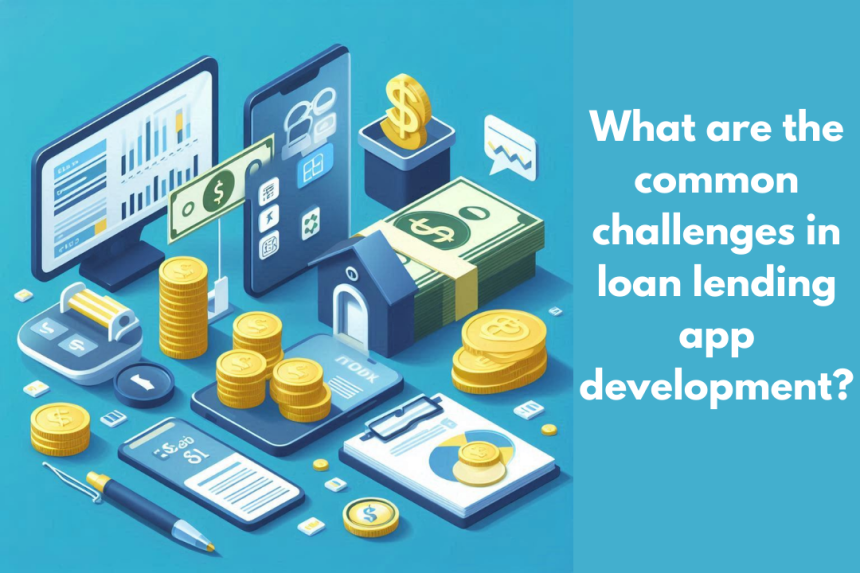
What are the common challenges in loan lending app development?
Developing a loan lending app is an exciting venture that promises convenience for users and opportunities for businesses. However, the journey from concept to a fully functional app is not without its challenges. In this article, we'll delve into the common challenges faced during loan lending app development and provide practical insights on how to overcome them.
Introduction Developing a loan lending app is an exciting venture that promises convenience for users and opportunities for businesses. However, the journey from concept to a fully functional app is not without its challenges. In this article, we'll delve into the common challenges faced during loan lending app development and provide practical insights on how to overcome them. Understanding the Loan Lending App Development Landscape The loan lending app development industry is a rapidly evolving field, influenced by technological advancements, changing consumer behavior, and stringent regulatory frameworks. As with any tech-driven sector, developers and businesses must navigate a complex landscape to deliver a secure, user-friendly, and compliant app. Common Challenges in Loan Lending App Development 1. Regulatory Compliance One of the most significant challenges in developing a loan lending app is regulatory compliance. Financial services are heavily regulated, and each region has its own set of laws and guidelines that must be adhered to. Non-compliance can result in severe penalties and damage to the company's reputation. Example: Ensuring compliance with GDPR in Europe, which mandates strict data protection measures. 2. Data Security and Privacy With sensitive financial data at stake, data security and privacy are paramount. Developers must implement robust security protocols to protect user information from breaches and cyber-attacks. This includes encryption, secure authentication methods, and regular security audits. Example: Encrypting data both at rest and in transit to prevent unauthorized access. 3. Integration with Third-Party Services Loan lending apps often rely on integration with third-party services for functions like payment processing, credit scoring, and identity verification. Ensuring smooth and secure integration can be challenging, as it requires compatibility and coordination with external systems. Example: Integrating with a payment gateway like Stripe or PayPal for transaction processing. 4. User Experience and Interface Design A seamless user experience (UX) and intuitive interface design are crucial for the success of a loan lending app. The challenge lies in creating a design that is both visually appealing and easy to navigate, ensuring that users can access the services they need without frustration. Example: Designing a user-friendly loan application process that minimizes the number of steps and simplifies information entry. 5. Scalability and Performance As the user base grows, the app must be able to handle increased traffic and data loads. Scalability and performance are critical to maintaining a smooth user experience. Developers need to plan for scalability from the outset, ensuring that the app can accommodate future growth. Example: Using cloud-based infrastructure like AWS to scale resources dynamically based on demand. 6. Managing Loan Risks Effective loan risk management is vital to the sustainability of a loan lending business. The app should incorporate advanced analytics and machine learning algorithms to assess creditworthiness and predict default risks. This can be a complex task requiring access to reliable data and accurate models. Example: Implementing a credit scoring system that evaluates multiple data points to assess borrower risk. 7. Cost and Time Management Developing a loan lending app can be a costly and time-consuming process. Cost and time management are essential to keep the project on track and within budget. This involves careful planning, resource allocation, and continuous monitoring to avoid scope creep and delays. Example: Setting clear milestones and deadlines to ensure timely delivery of the app. Overcoming Challenges in Loan Lending App Development 1. Staying Up-to-Date with Regulations To ensure regulatory compliance, stay informed about the latest laws and guidelines in your target market. Working with legal experts and compliance officers can help you navigate the complexities and avoid potential pitfalls. 2. Implementing Robust Security Measures Prioritize data security by implementing encryption, secure authentication, and regular security audits. Educate your team on best practices and stay vigilant against emerging threats. 3. Ensuring Seamless Integrations Choose reliable third-party providers and thoroughly test all integrations to ensure seamless functionality. Establish clear communication channels with partners to address issues promptly. 4. Prioritizing User-Centric Design Focus on creating a user-centric design that is intuitive and accessible. Conduct usability testing with real users to identify pain points and areas for improvement. 5. Planning for Scalability From the outset, plan for scalability by choosing flexible infrastructure and designing the app architecture to support growth. Monitor performance regularly and adjust resources as needed. 6. Employing Advanced Analytics Utilize advanced analytics and machine learning to manage loan risks effectively. Continuously update your models and algorithms to reflect changing market conditions and borrower behavior. 7. Effective Project Management Implement strong project management practices, including setting clear goals, timelines, and budgets. Use project management tools to track progress and communicate with your team. Frequently Asked Questions (FAQs) Q1: What are the essential features of a loan lending app? Essential features include secure user authentication, loan calculators, application tracking, payment processing, and customer support. Q2: How can I ensure data security in a loan lending app? Ensure data security by implementing encryption, using secure APIs, and conducting regular security audits. Q3: What are the common integration challenges in loan lending app development? Common challenges include compatibility issues, data synchronization, and maintaining security during data transfers. Q4: How do I handle scalability in a loan lending app? Plan for scalability by using cloud-based infrastructure and designing the app architecture to support future growth. Q5: What are the regulatory compliance requirements for loan lending apps? Compliance requirements vary by region but often include data protection laws, anti-money laundering regulations, and consumer protection guidelines. Conclusion Developing a loan lending app development comes with its share of challenges, but with careful planning and execution, these obstacles can be overcome. By understanding the common challenges and implementing best practices, you can create a secure, user-friendly, and compliant app that meets the needs of your users and stands out in a competitive market.



